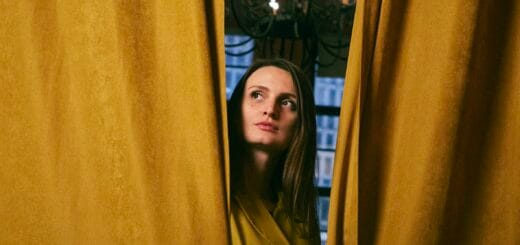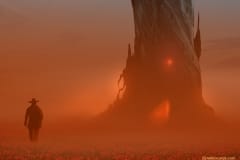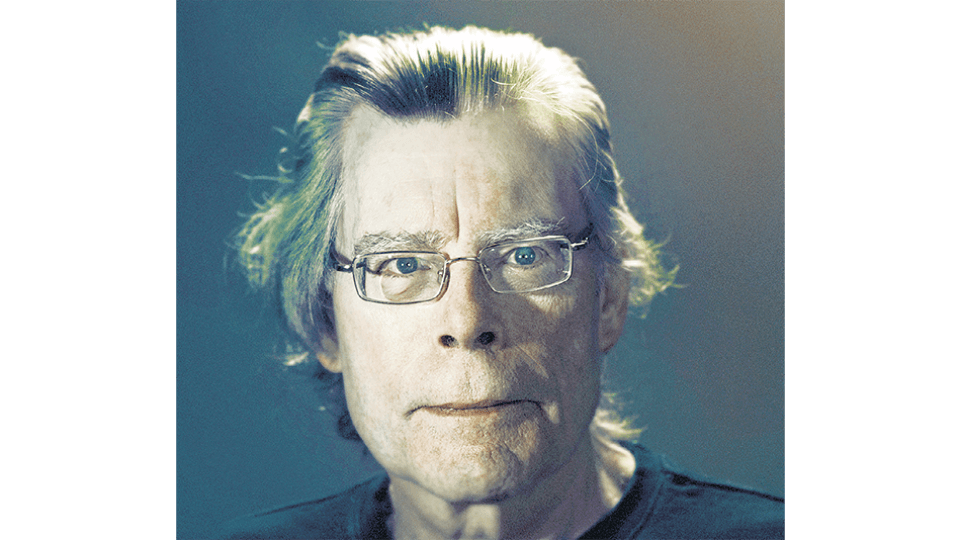Grant MacAllister
He is the Cinematographer of Alexander Bruckner‘s The Passenger Dollar Baby film.
SKSM: Could you start with telling me a little bit about yourself? Who are you and what do you do?
Grant MacAllister: My name is Grant MacAllister. I am a Los Angeles-based Cinematographer who specializes in dramatic narrative film. I studied cinematography at Columbia College Chicago and after graduating in 2012 I worked in the camera department on TV shows and feature films in my home state of New Mexico.
I moved to Los Angeles in 2018 to further pursue my career in filmmaking and shift my focus from camera assisting and into cinematography. Since moving, I’ve shot several award winning short films, including John Strucel’s “Cruel Perfection,” which was nominated for Best Cinematography at Glasgow’s “The Monthly Film Festival,” and the topic at hand, Alexander Bruckner’s “The Passenger,” which was nominated for Best Cinematography at the “Fantasy Film Festival” in Menton, France, and has screened at dozens of festivals worldwide.
SKSM: When did you know you wanted to become a cinematographer?
Grant MacAllister: I knew it was what I wanted to do since I was a teenager really. I grew up taking photos with my parent’s 35mm film cameras. In high school I did a lot of photography and spent countless hours in the darkroom. I have always been one to notice the lighting in a space, or natural lighting while out on a walk and take note on the kind of emotion it elicits.
While in high school, I enrolled in a film theory and criticism course at the local community college and my professor inspired me to look more into how the movies I love are made. The following semester I started a film production class, learned about every position on the set and found myself gravitating toward cinematography. After completing a few student projects, my professors told me I had a good eye for composition. I loved that I was able to merge my interest and strengths from still photography into motion picture photography. I continued with my studies, earning my undergrad degree in cinematography. I spent those years learning more about lighting, the discipline of shooting on 16mm and 35mm film and some of the technical aspects of the job.
SKSM: How do you communicate with a director to design a visual strategy for a film?
Grant MacAllister: When deciding on the visual approach for a film I will do several reads of the script. The first read is just to get the overall idea of the story, the characters, the world they’re in. I try not to think of any lighting or shots in this read. After that I’ll read the script with shots, camera moves, and lighting in mind, and think of several options to present to the director. I’ll meet with the director and go over my thoughts for how I think we should approach the film visually and see what ideas they have in mind for how they’d like to approach each scene.
From there I’ll create a look book or mood board for the film. On “The Passenger” I had put together a 12-page PDF of visual references for the film. This included ideas for lighting for each location, and specific shots. I typically will reference shots from films I think fit the project visually, and photographs that I’ll save to my computer that I find inspiring. This really helps to immediately communicate the look that I envision and the tone of the film to everyone involved.
SKSM: You worked with Alexander Bruckner on this film, what do you think the relationship between a director and a DP should be?
Grant MacAllister: Working with Alexander was a great experience. He brought his passion for filmmaking with him to set every day, and I think the crew really felt that. The relationship between the director and the DP should be one of trust and collaboration, and that’s what I found with working with Alexander. He was very open to my ideas and shot suggestions but didn’t lose sight of his unique vision for the film. My philosophy when it comes to cinematography is that it should first and foremost support the story being told. Cinematography isn’t solely about capturing a great looking image; an image that conveys a clear idea and translation of the story is more impactful. I prioritize the director’s vision for the film and strive to accurately translate it through my imagery.
SKSM: You worked on a Dollar Baby based on a Stephen King short story. It was your most challenging film?
Grant MacAllister: “The Passenger” was certainly not without its challenges. One of the challenges that stands out to me is when filming the bathrooms scenes at the rest stop. We had initially scouted the location at a park in north LA and were told we’d have access to any of the restrooms there. Naturally, we decided we wanted to shoot in the most spacious one to give the actors and myself room to work. On the day when we were scheduled to shoot, the parks department couldn’t get in touch with the person who had the master bathroom keys, and we had to re-work the scene to be in a much smaller single person bathroom. It ended up working out great for the story but was definitely a tight squeeze!
SKSM: When you’re going to shoot, what are your favorite lenses? Formats?
Grant MacAllister: My choice of lenses and camera format vary depending on what best suits the story being told. On “The Passenger,” I chose to shoot with Arri Alexa Mini and vintage Lomo Anamorphic lenses. Given that this was a story about someone with a split personality, I chose to use these older anamorphic lenses to add more distortion and unique character to the world these characters inhabit. I knew we would also be doing quite a bit of work inside the car, so it was useful to have the compact size of the Alexa Mini.
SKSM: Was there any funny or special moment when you made the movie that you would like to tell me about?
Grant MacAllister: We had this fake scorpion that we had used for the opening shot of the film. The plan was to use it as a placeholder for the scorpion to be done through visual effects in post, which we ultimately ended up doing, but the rubber scorpion’s movement looked surprisingly realistic. I’ve actually gotten questions about who our scorpion wrangler was on the film!
SKSM: Who are some of your influences (favorite dps/films)?
Grant MacAllister: The look of this film was influenced by Roger Deakin’s work on Denis Villeneuve’s “Prisoners,” and “Sicario.” We looked at Sicario for its landscapes, and Prisoner’s for the tone. David Fincher’s “Fight Club” came to mind as well, given that it deals with a similar theme of the protagonist having a violent and unpredictable alter ego.
SKSM: Are you a Stephen King fan? If so, which are your favorite works and adaptations?
Grant MacAllister: I am! I’ve really enjoyed the adaptations from The Shining, Carrie, Secret Window, Shawshank Redemption and HBO’s adaptation of The Outsider. There’s something in Stephen King’s work that lends itself incredibly well to be adapted to film.
SKSM: What are you working on nowadays?
Grant MacAllister: I just finished shooting a short film called “Positive” which I’m very excited about. It’s a thriller about two girls seeking revenge on the father who abandoned them. We are currently finishing up post-production on it and should be submitting to festivals soon!
SKSM: What one thing people would be surprised to know about you?
Grant MacAllister: I love to cook and bake! Had I not taken film classes I probably would have ended up going to culinary school.
SKSM: Thanks for taking the time to answer my questions. Is there anything you want to say to the fans that read this interview?
Grant MacAllister: Thanks for taking the time to do this interview. To all the fans, I want to thank them for their support of the film. We’ve been having screenings all over the world, so there’s a good chance The Passenger will be playing at a festival or a virtual screening near you soon!
SKSM: Do you like to add anything else?
Grant MacAllister: If you’d like to check out more of my work, feel free to visit my website, www.grantmacallister.com and follow me on Instagram @cinematics.
Thanks again!
















